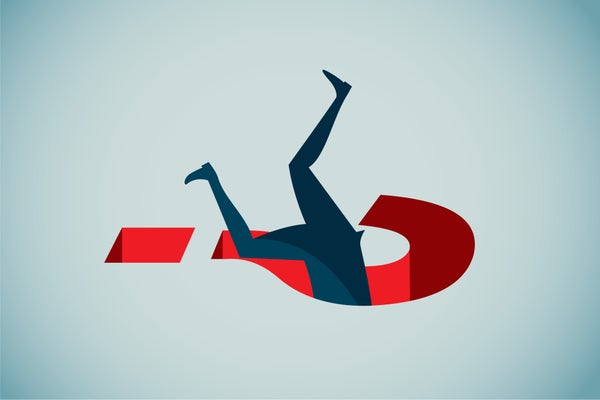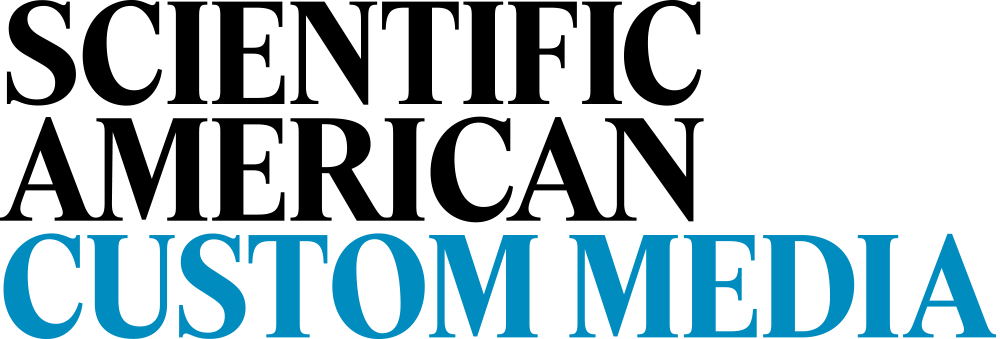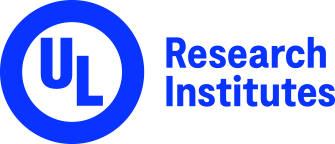We’re surrounded by risks of all sizes, every day. Some people might be risk-takers, while others do whatever they can to avoid them. But how can we tackle the risks that impact society on a global scale, like those linked to sustainable energy, societal health and digital technology? Science journalist Izzie Clarke explores this question in the latest podcast from Scientific American Custom Media. She sat down with Christopher J. Cramer, chief research officer and interim president for the leading safety science organization UL Research Institutes.
You can learn more about safety science on the UL Research Institutes website.
Izzie Clarke: Hello and welcome to this Scientific American Custom Media podcast. I’m science journalist Izzie Clarke, and in this episode we’re exploring safety science.
Imagine going about your day and the risks you’d encounter without safety measurements. Crossing a road would be a nightmare if traffic lights didn’t exist. Eating would be left to a game of chance without food standards in place. And don’t even think about the chaos of a lab without protective equipment and procedures. But in a busy world with increasing risks around energy, public health and technology, what can be done to engineer a safer world?
Thankfully, that’s what a leading safety science organization is currently addressing. UL Research Institutes takes a multidisciplinary approach to identify risks to humanity and our planet and counter them with science-based research designed to benefit people everywhere.
I spoke with Chris Cramer, chief research officer and interim president for UL Research Institutes, about the biggest safety challenges of today and what sets the organization apart from others.
Chris Cramer: UL Research Institutes is one of three organizations that all trace their heritage back 130 years now to the initial founding of Underwriters Laboratories. And Underwriters Laboratories, throughout its history, has endeavored to make the world a safer place. And UL Research Institutes addresses that challenge by doing basic and applied research in order to tackle what we think of as the most pressing challenges in what we call safety science.
When we think about areas that we want to tackle, we ask ourselves three questions. First, is it important, right? Is the risk a salient one? Does it affect a lot of people? Second, is there white space? Obviously, if a lot of other organizations are already addressing that, and I think of sort of classical health risks—cancer, diabetes, biomedical space. A lot of investment against those, where it’s not that we would necessarily bring anything new or revolutionary to the table.
But there are a number of areas where there is a dearth of attention, if you like. And as a result, if we can build capacity and build capability to address those challenges, then we view that as a real opportunity. And of course, we do have that 130-year legacy. So we have some areas that have always been our focus and we’ve established a leadership position and have outstanding capabilities, and we pursue those.
Clarke: Yeah, absolutely. And I think it’s really interesting because we are living in a time where there is a real need for science-based solutions. From your perspective, what do UL Research Institutes, otherwise known as ULRI, see as the most pressing issues for the twenty-first century?
Cramer: I wish there were only one pressing issue. It would be so much easier for all of us! When we surveyed recently the universe of potential risks and asked ourselves those questions about where would we best deploy our resources, we ended up focusing on what we call three grand challenge commitments.
So, for us, those three grand challenges are building resilience for a sustainable future. And if that sounds like it might have climate change embedded in it, it certainly does. Sustainability is in there. Advancing individual and societal health in the twenty-first century—what interests us are the health challenges that derive from anthropogenic activity, right?
Since the industrial revolution, we’ve been putting things in the environment and the air and water, and many of those can have health consequences, although they may be poorly understood. And then finally, promoting safety at the human–digital interface. It’s really the degree to which we’ve handed over control of a lot of critical systems to digital control.
The one that’s in the news every day, nowadays, is artificial intelligence. But even before that, there was a substantial amount of digital entities that are taking on more tasks that used to be handled by humans, and consequences from social media misinformation and the like. These all constitute important risks as well.
Clarke: Let’s start with resilience for a sustainable future. I think there’s been a lot of focus on energy over the recent months and years, even. So, people understandably need to power their homes, but we’re also living in a circumstance where there are severe climate threats. There is a need to move away from those unsustainable methods that we can’t rely on in the future, or may not be able to, but that could then add pressure to the system that we rely on. So, how can safety science mitigate that?
Cramer: There’s an ever-growing demand for energy, power, and that’s not going to go away. Our society is going to keep asking for more and more. What we need to do is decarbonize the sources of energy, and that involves using renewable resources. And one aspect of renewable resources that is a bit challenging is their intermittency. The wind blows when it blows, the sun shines when it shines.
And so, in order to make the best use of those resources, you need to be able to store the energy that’s generated when they’re online and then access it when they’re offline and when you can balance loads. That’s why so much energy does now come from renewable resources. But that storage mechanism is typically called a battery, right?
The first law of thermodynamics is a very rigorous master. It says energy can neither be created nor destroyed, but it can change form. And so if you put a lot of energy into a battery and then, accidentally, you allow it to change form into, say, thermal energy, chemical energy, what have you, that can have disastrous consequences, right? Large fires, off-gassing of toxic substances.
And these are now well known from electric vehicles burning, e-mobility batteries that go into what’s called thermal runaway when the battery heats up and eventually ignites and potentially explodes. So, we are very active in that space, in trying to understand what are the circumstances that can lead to a thermal runaway event, how can you mitigate the use cases to try to avoid that.
All the way to more basic research of the battery that’s in the marketplace right now, in your cell phone, in your cars, are based on what’s called lithium-ion technology, and they have many wonderful features, high energy density, you can recharge it many, many times. But they have some unfortunate features as well with respect to when they go into thermal runaway.
It’s quite possible we will find other chemistries for that battery – don’t rely on lithium, for example – that in certain use cases could replace them and have a lower safety risk. It may be very hard to ever replace that technology completely, but to the extent we can reduce risk in other areas, we’re interested in that.
Clarke: And what can we do when it comes to severe climate issues? How can you help with that? And what is ULRI focusing on?
Cramer: The consequences of climate change are dangerous, and one is wildfires. The prevalence of fire in wildland environments has risen dramatically because of rising temperatures. And many people over the last two or three years, I think, have experienced, if not a wildfire itself, the smoke from wildfires. That phenomenon, the smoke from the fire, the particulates that are released in the fire, that is a human health concern. Air quality goes down.
So, we’re interested in some of our research in how can you perhaps protect indoor areas through filtering, for example. What can everyday people do to create sort of do-it-yourself filters? And we’ve done some work on using furnace filters and box fans and best practices to build your own filters.
And then there’s also the issue that fires may start in the wildland, but so many people now live at what’s called the wildland–urban interface. It’s where a city or a suburb or an exurb now touches up against traditional wildland. And when the fire reaches that border, there are questions about how do you harden construction so it’s less prone to igniting. And if one house does start burning, how do you keep that from transferring to the next house over? What construction techniques can you use? How can you plan communities in order to reduce fire spread and fire risk? And working with the fire service, how do you most effectively fight those fires in order to keep them from propagating?
Clarke: That’s one of the three grand challenges. So, let’s move on to improving health on a societal scale and also a global scale. It seems like an impossible challenge to resolve that. So how are you attempting to do that?
Cramer: So, our Chemical Insights Research Institute is really attempting to build the bridge often in order to understand the health consequences of something that’s in the environment. You end up relying on biostatistics. You’ve got populations that you know have different exposure levels than other populations. You look at trends and the degree to which they may have exhibited certain kinds of diseases or symptoms, and you look for correlations and you just do your best job to say that, OK, well, this chemical leads to this problem. But it’s not clear why, necessarily.
So, we’ve really been working hard to use new capabilities in cellular-level assays, assays of what is happening to genetic material when it’s exposed to certain kinds of unusual molecules, anthropogenic molecules, that might not otherwise be seen. To go after that mechanistic aspect, there’s literally 10,000, 20,000, a huge number of man-made chemicals that are in products, textiles, you name it, for which we really have no toxicological data. So, we don’t have the capacity to cover every aspect of environmental contamination. Our focus has predominantly been on air quality.
So, we’re looking at volatile organic chemicals that may get into building air, into classroom spaces because of things that are in those classrooms like 3D printers, for example, additive manufacturing. And we’re also interested in textiles. And part of that is because of our work with the fire service.
So, the fire service wears specific personal protective equipment, and it is composed of certain kinds of fabrics, textiles, that may have embedded in them things to make them more waterproof, to make them more wearable. The degree to which that contact with your skin may lead to transference of chemicals that are in the fabric, and the degree to which that may have toxicological consequences, we focus on that as well.
Clarke: And so that brings us on to our third of the grand challenges: security for humans in the digital world. So, there’s no doubt that digital technologies are a growing part of our society. We use them more and more, and they are integrated more and more into our everyday life. So, how can you make sure that the digital future is something that is both equitable and safe?
Cramer: Yes, and I’m really glad you brought that up, that equitability in some sense is intrinsic to safety. If you polarize a society dramatically through digital means and make it inequitable, there will be potential safety consequences associated with that. I also think, in some sense, it’s the most wide-open field from a research perspective at the moment. Artificial intelligence is a system, a model, whatever, that is expected to evolve. It learns and it changes as a result of its learning. And that’s what makes the safety-science problem so interesting, in a way.
Underwriters Laboratories has spawned three organizations over its history. One of them is called UL Solutions. It’s a for-profit company that does testing, inspections, certification, and has many, many customers who rely on it to establish that their products are safe. And there are standards—that’s what our third organization does, helps to write standards—there are standards that people like UL Solutions test against in order to issue certifications.
But all of those presume that the product is going to be the same a week from now as it was today. Whereas, by definition, the artificially intelligent product is not supposed to be the same in a week as it is today. And so you can see how, gosh, well, you have to test it again. And if so, how often? And oh, by the way, can you somehow not just test what it does, which is the traditional thing, but wouldn’t it be better if you could test the artificial-intelligence component so that you know it can or can’t go wandering off into a dangerous regime?
But we really don’t know the questions to ask yet. So, it is really still at that very fundamental stage of just trying to turn up what could go wrong, what might you do about how it could go wrong, that we’re trying to build the foundation for subsequent work.
Clarke: Well, that’s what I was going to ask. How important is it for you that the information and the research that you are championing is accessible to people, that other companies can take your research and run with it? How important is that collaboration for you?
Cramer: It is of paramount importance to us. Prior to my arrival at UL Research Institutes in 2021, I spent 30 years as an academic researcher. I was a professor of chemistry, ultimately also an administrator at the University of Minnesota. And academic research is a terrifically powerful thing. But it historically has tended to be more about knowledge generation—publish some good papers, move on because you’re sure somebody will pick that up.
But if you can’t get that new knowledge to ultimately influence human behavior or create a technology that is indeed taken to scale in the marketplace, then your efforts are a little bit sterile. We at UL Research Institutes are totally committed towards what’s called open science, collaborative science, if you like.
These problems are so big, so tough, that it doesn’t just take a village, it takes a lot of villages to attack them. And if you don’t have the data, if people aren’t sharing the data, then you’re just needlessly slowing down progress. And so we are very careful that everything we do from a research perspective, we make it freely accessible, we publish all of our papers, open access.
But we’re not just publishing those technical papers. We do have websites dedicated to what are the best practices you can use to protect yourself when the wildfire smoke is affecting your community. What are the best practices for storing your e-mobility devices? There’s no value in ownership on this knowledge. There’s value in sharing.
Clarke: I certainly agree with that. Thank you to Chris Cramer from UL Research Institutes.
This work was produced by Scientific American Custom Media and made possible through the support of UL Research Institutes. You can learn more about safety science on the UL Research Institute’s website, www.ul.org. I’m Izzie Clarke. Until next time.


